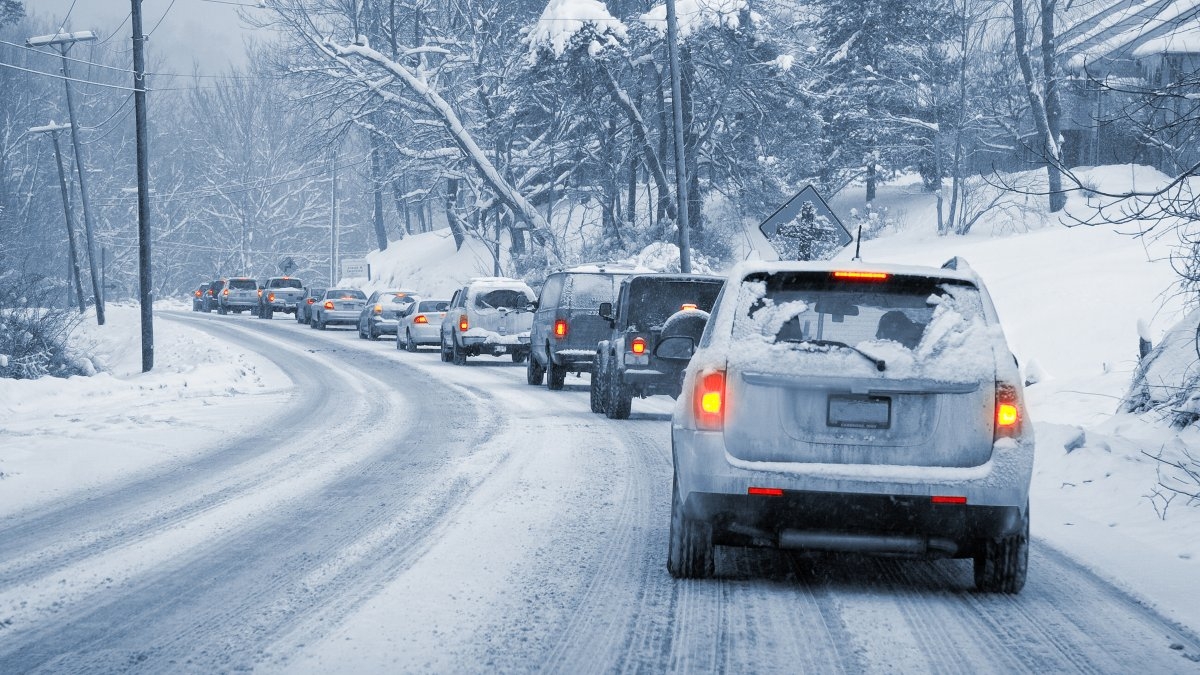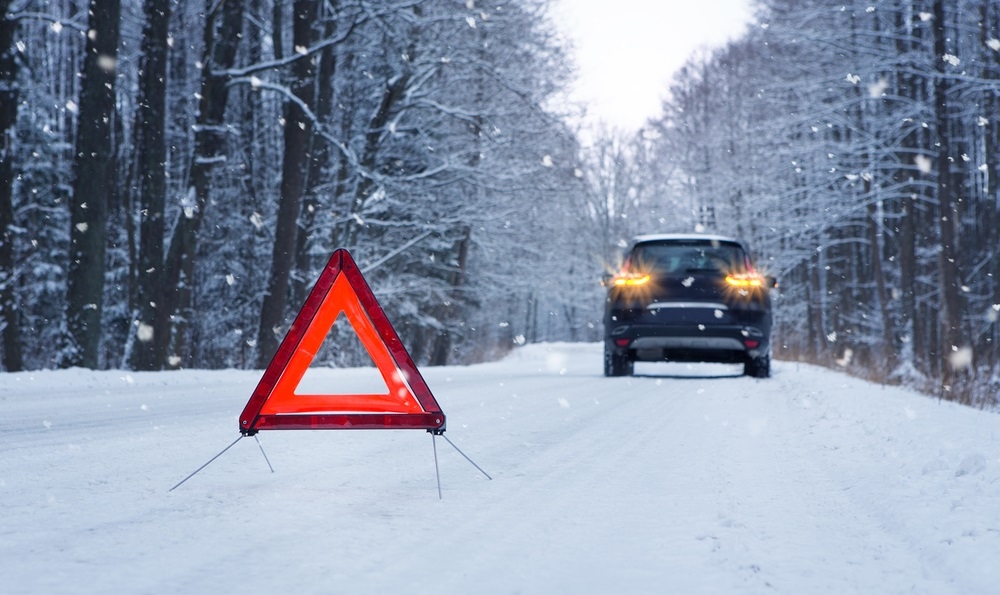Useful Tips to Drive on Icy Road in Winter
General precautions
 |
| Photo: Outside Magazine |
The first consideration is whether you need to go out by car at all. Icy roads can be extremely treacherous, so we advise you to question whether the journey is really worth the financial and emotional cost of a potential accident.
Listen to the radio. Weather forecasters will often tell you if there are specific danger zones and this may help you decide whether or not to venture out.
You may already be on the road and are unsure whether ice is going to be a problem.
One of the major differences between snow and ice is that snow is easy to spot. Black ice, on the other hand, blends so well into the colouring of the road you often don’t know it’s there until it’s too late. It’s a good idea to use your car thermometer as a guide. If it registers the air’s ambient temperature as being close to freezing, you need to be extra careful.
Another way of detecting ice is to watch the other drivers around you. If you spot them sliding, or you notice cars that have veered off the road, you have probably driven into an icy area.
If you find yourself in a situation that makes you nervous, pull over and either wait for the temperatures to rise or find an alternative mode of transport, according to Uniroyal.
Top tips for winter driving
 |
| Photo: Driving-tests |
Be cautious on the road
While this may seem like common sense, it’s incredibly important. Driving too close, speeding, changing lanes suddenly; these are all things that can result in collisions for you or other drivers around you. Stopping distances on icy roads are more than double that of dry roads. Leaving space, slowing down and being aware of the other vehicles on the road can lead to a safer, less stressful drive.
Use winter tires
It’s proven that winter tires provide more control in icy conditions. So much so that provincial governments offer rebates or insurance premiums to those who have winter tires installed on their vehicles. Though the price of these tires may seem high, it’s far cheaper than repair bills or increased insurance costs after an accident, not to mention the added peace of mind of having them. Learn more about winter tires here, as Carfax cites.
Know how to drive on black ice
Ice impacts your stopping distance and vehicle handling. Practice driving in slippery conditions like an empty, snow or ice-covered parking lot to help prepare you. Get a feel for how the car reacts when you brake suddenly, or when it starts to slide. It’s also important to practice this with your winter tires on. Snow tires are made of a compound that will stay soft and pliant in cold temperatures rather than turning hard in the cold like summer or all-season tires.
Tips for Driving in the Snow
Stay home. Only go out if necessary. Even if you can drive well in bad weather, it’s better to avoid taking unnecessary risks by venturing out.
Drive slowly. Always adjust your speed down to account for lower traction when driving on snow or ice.
Accelerate and decelerate slowly. Apply the gas slowly to regain traction and avoid skids. Don’t try to get moving in a hurry and take time to slow down for a stoplight. Remember: It takes longer to slow down on icy roads.
Increase your following distance to five to six seconds. This increased margin of safety will provide the longer distance needed if you have to stop.
Know your brakes. Whether you have antilock brakes or not, keep the heel of your foot on the floor and use the ball of your foot to apply firm, steady pressure on the brake pedal.
Don’t stop if you can avoid it. There’s a big difference in the amount of inertia it takes to start moving from a full stop versus how much it takes to get moving while still rolling. If you can slow down enough to keep rolling until a traffic light changes, do it.
Don’t power up hills. Applying extra gas on snow-covered roads will just make your wheels spin. Try to get a little inertia going before you reach the hill and let that inertia carry you to the top. As you reach the crest of the hill, reduce your speed and proceed downhill slowly.
Don’t stop going up a hill. There’s nothing worse than trying to get moving up a hill on an icy road. Get some inertia going on a flat roadway before you take on the hill.
| Icy conditions can be accompanied by hail storms. These can limit your visibility so, if safe to do so, it’s a good idea to pull off the road, ideally stopping somewhere that’s covered, such as under a bridge. Direct your car towards the hail, so your windscreen withstands the majority of the force and not your side or rear windows. Your windscreen is capable of protecting you more than other windows. Wait for the hail to pass before setting off again. It’s always a good idea to carry a charged mobile phone with you so you can notify people if you’ve broken down. |
 Useful TIPS to make a good cup of coffee Useful TIPS to make a good cup of coffee A good cup of coffee in the morning can set the mood and get you ready for your whole day. But when the coffee shops ... |
 Useful tips to make DIY wedding invitations Useful tips to make DIY wedding invitations You're going to hold a wedding ceremony and look for some tips to make your DIY wedding invitations? Knowinsider would give you easy methods to ... |
 7 useful tips to clean your fingernails 7 useful tips to clean your fingernails Nail care and keeping the fingernails clean not only looks healthier, it can also help prevent the transmission of diseases. Knowinsider is going to introduce ... |


























